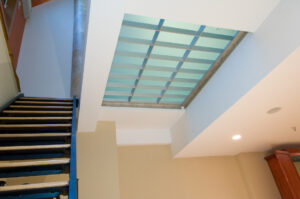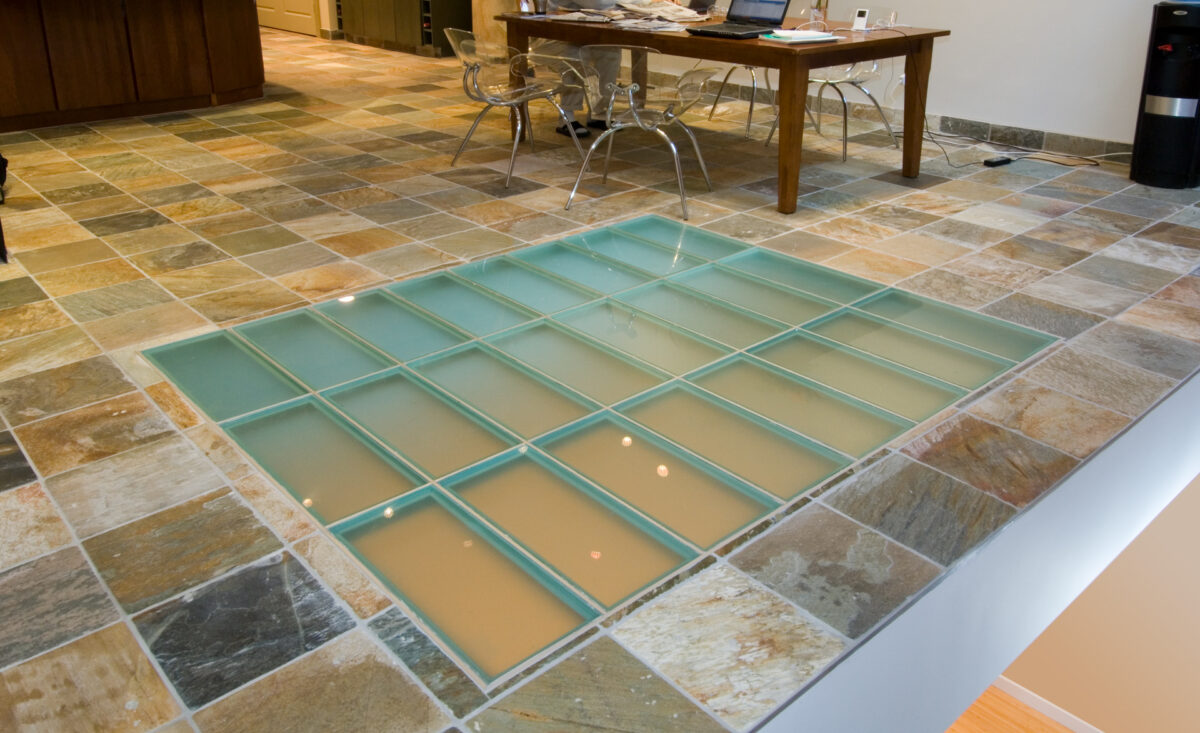In today’s architectural and interior design landscape, the use of innovative materials is revolutionizing the way we conceptualize and create modern spaces. One such material that has gained significant attention is glass flooring. From residential homes to commercial establishments, glass flooring systems are making a bold statement, combining functionality with breathtaking aesthetics. This article delves into the world of glass floors, exploring their advantages, evolution, types, installation and maintenance tips, design applications, safety considerations, and future trends.
Advantages and Considerations of Glass Flooring Systems
Glass flooring offers a myriad of advantages, making it an attractive choice for contemporary spaces. One of the primary benefits is its ability to introduce natural light into interior areas, creating an open and airy ambiance. Additionally, glass floors can visually expand the perceived space, making them an ideal option for smaller rooms or areas with limited natural light. From a design perspective, these systems effortlessly blend with various interior styles, adding a touch of modern elegance.
Considerations for glass flooring include its durability and load-bearing capacity. Modern advancements in glass technology have significantly enhanced the strength and resilience of glass floors, making it suitable for high-traffic areas. Moreover, the slip-resistant properties of glass make it a safe option for flooring, dispelling concerns about potential hazards.
When considering glass flooring for a space, it’s crucial to engage experienced professionals who understand the intricacies of installation and can provide guidance on maintenance requirements.
The Evolution of Glass Flooring: From Function to Design
The evolution of floor glass can be traced back to its utilitarian origins, where its primary function was to allow light to filter through different levels of a building. Over time, architects and designers recognized the potential of floor glass as a design element, incorporating it into their projects to create visually stunning environments.
Historically, glass flooring was limited to specific applications due to technological constraints and safety concerns. However, advancements in materials and engineering have propelled glass floors into the realm of design innovation, enabling their use in diverse settings, from residential homes to commercial skyscrapers.
Types of Glass Flooring: Finding the Perfect Fit for Your Space
 When exploring the possibilities of glass flooring, it’s essential to understand the various types available to find the perfect fit for your space.
When exploring the possibilities of glass flooring, it’s essential to understand the various types available to find the perfect fit for your space.
Laminated Glass Flooring
Laminated glass flooring consists of multiple layers of glass with an interlayer, offering exceptional strength and safety. It is a versatile option, suitable for both residential and commercial applications.
Structural Glass Flooring
Structural glass flooring eliminates the need for visible supportive elements, creating a seamless, minimalist aesthetic. This type of glass flooring is often used in contemporary architectural designs to achieve a sleek and sophisticated look.
Frosted Glass Flooring
Frosted glass flooring adds a touch of privacy while still allowing light to penetrate the space. It is a popular choice for areas where a degree of translucency is desired.
| Type of Glass Flooring | Description |
| Laminated Glass Flooring | Consists of multiple layers of glass with an interlayer, offering exceptional strength and safety. Suitable for both residential and commercial applications. |
| Structural Glass Flooring | Eliminates the need for visible supportive elements, creating a seamless, minimalist aesthetic. Commonly used in contemporary architectural designs. |
| Frosted Glass Flooring | Adds a touch of privacy while still allowing light to penetrate the space. Popular choice for areas where a degree of translucency is desired. |
Installation and Maintenance Tips for Glass Flooring Systems
Proper installation and maintenance are crucial for the longevity and performance of glass flooring systems. During installation, precise measurements and professional handling are imperative to ensure a seamless and secure fit. Engaging certified installers with experience in working with glass flooring is paramount to achieving optimal results.
Regular maintenance involves cleaning the glass surface using non-abrasive materials and inspecting the structural integrity of the flooring system. Any signs of wear or damage should be promptly addressed to prevent further issues.
Incorporating Glass Flooring in Residential Interior Design
In residential interior design, the incorporation of glass flooring introduces a contemporary and luxurious element to the space. Whether used in entryways, bathrooms, or as part of a multi-level design, glass flooring can transform the aesthetic and functionality of a home. Its ability to allow natural light to permeate the interior creates a sense of openness and connectivity with the outdoors.
Creating Visual Impact: Using Glass Flooring in Commercial Spaces
Glass flooring holds immense potential in commercial spaces, where it can serve as a focal point or a unique feature that sets the establishment apart. From retail environments to corporate offices, the use of glass floors can elevate the overall design concept, creating a memorable and captivating experience for visitors and employees alike.
Safety Measures and Standards for Glass Flooring Applications
Ensuring the safety of glass flooring systems is a top priority in both residential and commercial settings. Adhering to industry safety standards and regulations is essential during the design, installation, and maintenance phases. Incorporating slip-resistant coatings and employing load-bearing calculations are critical safety measures that must be meticulously implemented to mitigate potential risks.
The Future of Glass Flooring: Trends and Innovations
As technology and design continue to advance, the future of glass flooring holds exciting possibilities. Innovations in sustainable materials and smart integrations are expected to shape the next generation of glass flooring systems. Additionally, the integration of customizable lighting features and digital enhancements may further elevate the allure of glass flooring in modern spaces.
In conclusion, the versatility, aesthetic appeal, and functionality of glass flooring position it as a compelling choice for those seeking to make a bold statement in their interior design. With careful consideration of its advantages, types, installation, design applications, safety measures, and future trends, the integration of glass flooring systems, like pavement lights, can truly redefine and elevate modern spaces.

